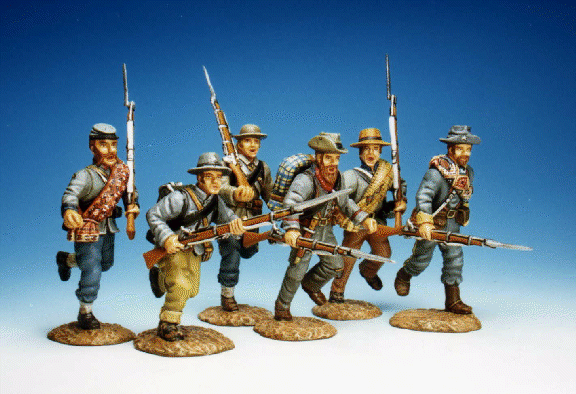


The Rivalry between the Southern / Confederate agricultural and the Northern / Union industrial states of America, during the middle years of the 19C developed until slavery, a major corner stone of the southern economy, became the issue leading to the deterioration of relationships and the declaration of war in 1861.
The war commenced well for the better organised and lead south, with the poorly lead North defeated at Bull Run and Richmond on 1861 and 1862, and in 1863 at Charlottesville.
Later in 1863 General Lee, commander of the Southern army invade the Northern states of Maryland and Pennsylvania, using the Southern mountains as a screen, moved up to the north of Washington to threaten it from the north. The Union army, with its new commander General Meade, moved slowly to catch up, while Lee move fast and started a swing to the east, although his cavalry commander J.E.B. Stuart, was absent and his where abouts were unknown to Lee. Lees army almost stumbled into lead elements of Meades army at a town called Gettysburg. So started a major three day battle that lead to Lees defeat and the turning point of the war.
From the Battle of Gettysburg onwards the South was on the defensive. The resources were running out for the south, while in the North the industrial power houses were gearing into war footing, and for the first time the industrial might of America was shown.
The war dragged on for other two years, until the final capitulation of the Confederate troops at Apponmattox. Thus the Union of the states was saved and helped advanced the abolition of slavery. The war was also a turning point in land warfare, marking the change from Napoleonic style of warfare, as personified by General Lee of the south into modern warfare, the use of mass artillery, trenches other than siege work, early machine guns (Gaterling gun) and industrial power of the country.